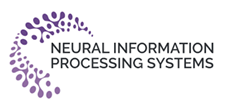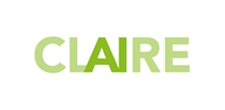
ΑΙhub.org
Congratulations to the #ICML2024 award winners
Find out who won the Test of Time award, and the Best Paper award at ICML this year.
25 July 2024, by
Lucy Smith
#RoboCup2024 – daily digest: 21 July
In the last of our digests, we report on the closing day of competitions in Eindhoven.
21 July 2024, by
Lucy Smith
#RoboCup2024 – daily digest: 20 July
In the second of our daily round-ups, we bring you a taste of the action from Eindhoven.
20 July 2024, by
Lucy Smith
#RoboCup2024 – daily digest: 19 July
Welcome to the first of our daily round-ups from RoboCup2024 in Eindhoven.
19 July 2024, by
Lucy Smith
Training AI requires more data than we have — generating synthetic data could help solve this challenge
The rapid rise of generative AI has brought advancements, but it also presents significant risks.
26 July 2024, by
The Conversation
#ICML2024 – tweet round-up from the first few days
We take a look at what participants have been getting up to at the International Conference on Machine Learning.
24 July 2024, by
Lucy Smith
International collaboration lays the foundation for future AI for materials
Presenting an extended version of the Open databases integration for materials design (OPTIMADE) standard.
23 July 2024, by
Linköping University
Record labels are suing tech companies for copying classic songs – and the results could shape the legal future of generative AI
Find out more about recent cases of alleged copyright infringement.
22 July 2024, by
The Conversation
What’s on the programme at #ICML2024?
We look ahead to the forthcoming International Conference on Machine Learning.
17 July 2024, by
Lucy Smith
The Good Robot Podcast: Featuring Maurice Chiodo
In this episode, Eleanor and Kerry talk to Maurice Chiodo about how maths can throw out big ethical issues.
16 July 2024, by
The Good Robot Podcast
AI UK 2024 conference recordings now available to watch
Catch up with some of the sessions from the AI UK event.
15 July 2024, by
Lucy Smith
What’s coming up at #RoboCup2024?
Find out when the different leagues competitions and the symposium are taking place.
12 July 2024, by
Lucy Smith
Interview with Sherry Yang: Learning interactive real-world simulators
Find out about work that won an outstanding paper award at ICLR2024.
11 July 2024, by
Lucy Smith
The Good Robot Podcast: Featuring Helen Hester
In this special live episode from Tech Transformed, Kerry chats to Helen Hester about technology used around the house.
10 July 2024, by
The Good Robot Podcast
Are models biased on text without gender-related language?
We test if models are free of gender bias in cases where there are minimal gender correlations.
09 July 2024, by
Catarina Belem
From sketches to a robot with artificial intelligence
How do you develop a product with as little human involvement as possible? LiU students built a robot with the help of generative artificial intelligence.
08 July 2024, by
Linköping University
New database features 250 AI tools that can enhance social science research
Researchers have developed a database of AI tools for the field.
05 July 2024, by
The Conversation
The Machine Ethics podcast: AI Ethics, Risks and Safety Conference
This special edition compiles vox-pops recorded at the AI Ethics, Risks and Safety Conference in Bristol.
04 July 2024, by
The Machine Ethics Podcast
DataLike: Interview with Camila Manera Schor
This week, Ndane chats to Camila Manera Schor about her studies and career so far.
Interview with Yuan Yang: working at the intersection of AI and cognitive science
We hear from AAAI/SIGAI doctoral consortium participant Yuan Yang.
02 July 2024, by
Lucy Smith
New open-source platform allows users to evaluate performance of AI-powered chatbots
Researchers have developed a platform for the interactive evaluation of chatbots such as ChatGPT.
01 July 2024, by
University of Cambridge
AIhub monthly digest: June 2024 – network resource allocation, protein structure prediction, and a Ge’ez-Amharic-English dataset
Welcome to our monthly digest, where you can catch up with AI research, events and news from the month past.
27 June 2024, by
Lucy Smith
New computer vision method helps speed up screening of electronic materials
The technique characterizes a material’s electronic properties faster than conventional methods.
26 June 2024, by
MIT News
The Good Robot Podcast: Featuring Heather Zheng
In this episode, Eleanor and Kerry talk to Heather Zheng about poisoning AI and putting privacy first.
25 June 2024, by
The Good Robot Podcast
Viruses are doing mysterious things everywhere – AI can help researchers understand what they’re up to in the oceans and in your gut
Using "protein language models" to classify previously unseen viral sequences.
24 June 2024, by
The Conversation
Machine learning-aided thermography for building heat loss detection
Machine learning can automate building energy diagnostics using thermal imaging.
21 June 2024, by
University of Waterloo
AI Fringe 2024 – event recordings available
Watch the half-day event in full.
20 June 2024, by
Lucy Smith
The Machine Ethics podcast: AI fictions with Alex Shvartsman
In this episode, Ben chats to Alex Shvartsman about generative AI, human vs AI authorship, our AI future, and more
19 June 2024, by
The Machine Ethics Podcast
AI chatbots are intruding into online communities where people are trying to connect with other humans
Casey Fiesler investigates Meta's AI chatbot
18 June 2024, by
The Conversation
How to regularize your regression
Considering how to tune the norm-based regularization parameters in linear regression.
17 June 2024, by
ML@CMU









